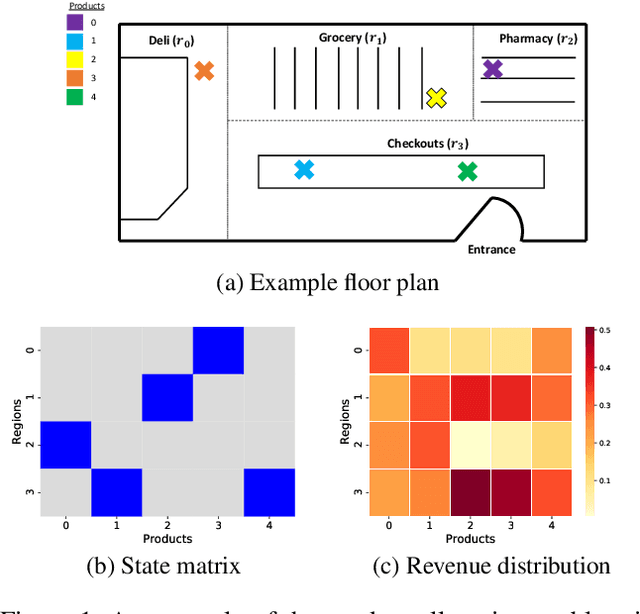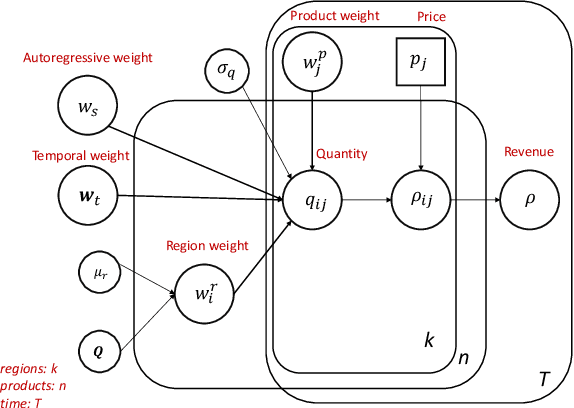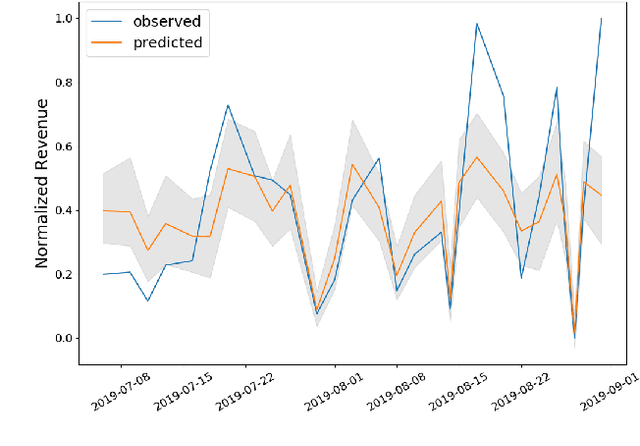A Probabilistic Simulator of Spatial Demand for Product Allocation
Paper and Code
Jan 09, 2020



Connecting consumers with relevant products is a very important problem in both online and offline commerce. In physical retail, product placement is an effective way to connect consumers with products. However, selecting product locations within a store can be a tedious process. Moreover, learning important spatial patterns in offline retail is challenging due to the scarcity of data and the high cost of exploration and experimentation in the physical world. To address these challenges, we propose a stochastic model of spatial demand in physical retail. We show that the proposed model is more predictive of demand than existing baselines. We also perform a preliminary study into different automation techniques and show that an optimal product allocation policy can be learned through Deep Q-Learning.
 Add to Chrome
Add to Chrome Add to Firefox
Add to Firefox Add to Edge
Add to Edge